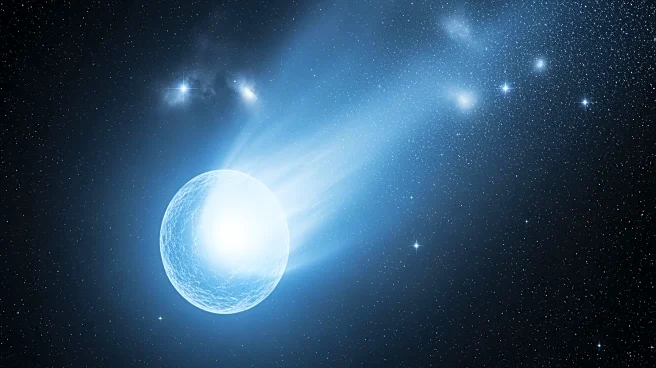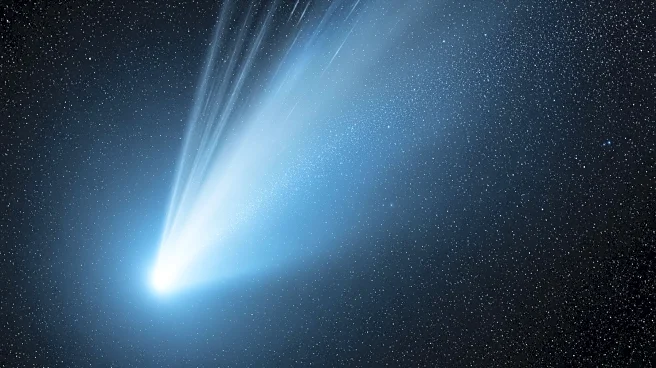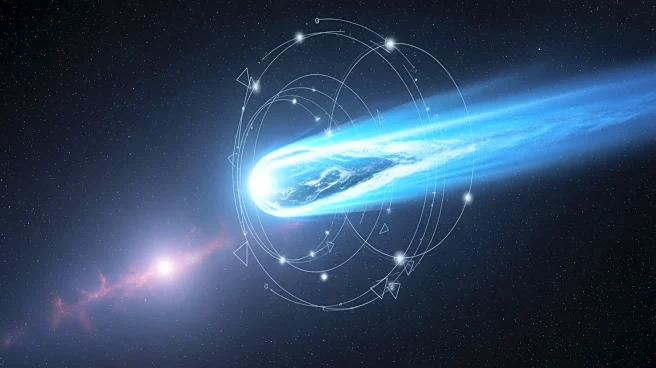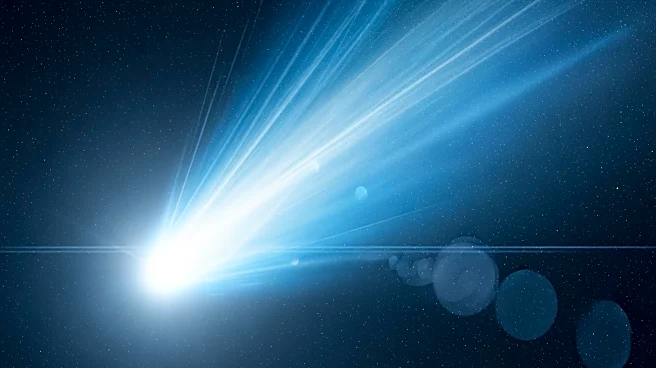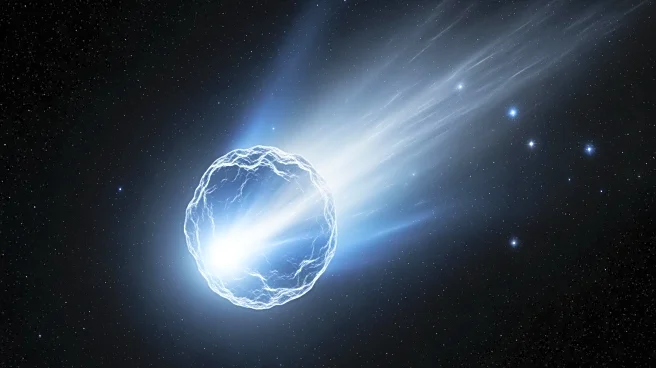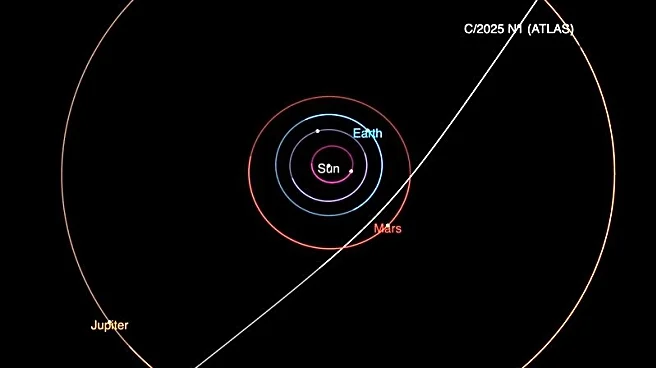What's Happening?
NASA's James Webb Space Telescope has captured a groundbreaking mid-infrared image of the Apep system, revealing four spiraling dust shells emitted by two Wolf-Rayet stars over the last 700 years. Previously,
only one shell was detected, but Webb's advanced capabilities have confirmed the existence of additional shells. The stars in the Apep system, named after the Egyptian god of chaos, have a rare orbital period of 190 years, during which they pass closely for 25 years, forming dust. The system also includes a massive supergiant star that carves holes into the expanding dust clouds. This discovery was made possible by combining Webb's data with observations from the European Southern Observatory's Very Large Telescope.
Why It's Important?
The discovery of multiple dust shells around the Apep system provides new insights into the behavior and lifecycle of Wolf-Rayet stars, which are rare and significant in the study of stellar evolution. Understanding the dynamics of these stars can help scientists predict their eventual supernova explosions and potential gamma-ray bursts, which are among the most powerful events in the universe. The findings also enhance our knowledge of cosmic dust formation and distribution, which plays a crucial role in the universe's structure and the formation of new stars and planets.
What's Next?
Future observations are needed to determine the precise distance of the Apep system from Earth, which will further refine the understanding of its dynamics. Researchers will continue to study the system to anticipate the stars' eventual supernova explosions and potential gamma-ray bursts. The James Webb Space Telescope will continue to explore other stellar systems, providing more data to unravel the mysteries of the universe.
Beyond the Headlines
The discovery highlights the capabilities of the James Webb Space Telescope in advancing astrophysical research. The ability to detect faint cosmic dust structures opens new avenues for studying the lifecycle of stars and the formation of complex cosmic phenomena. This research contributes to the broader understanding of the universe's evolution and the role of rare stellar systems in cosmic history.


